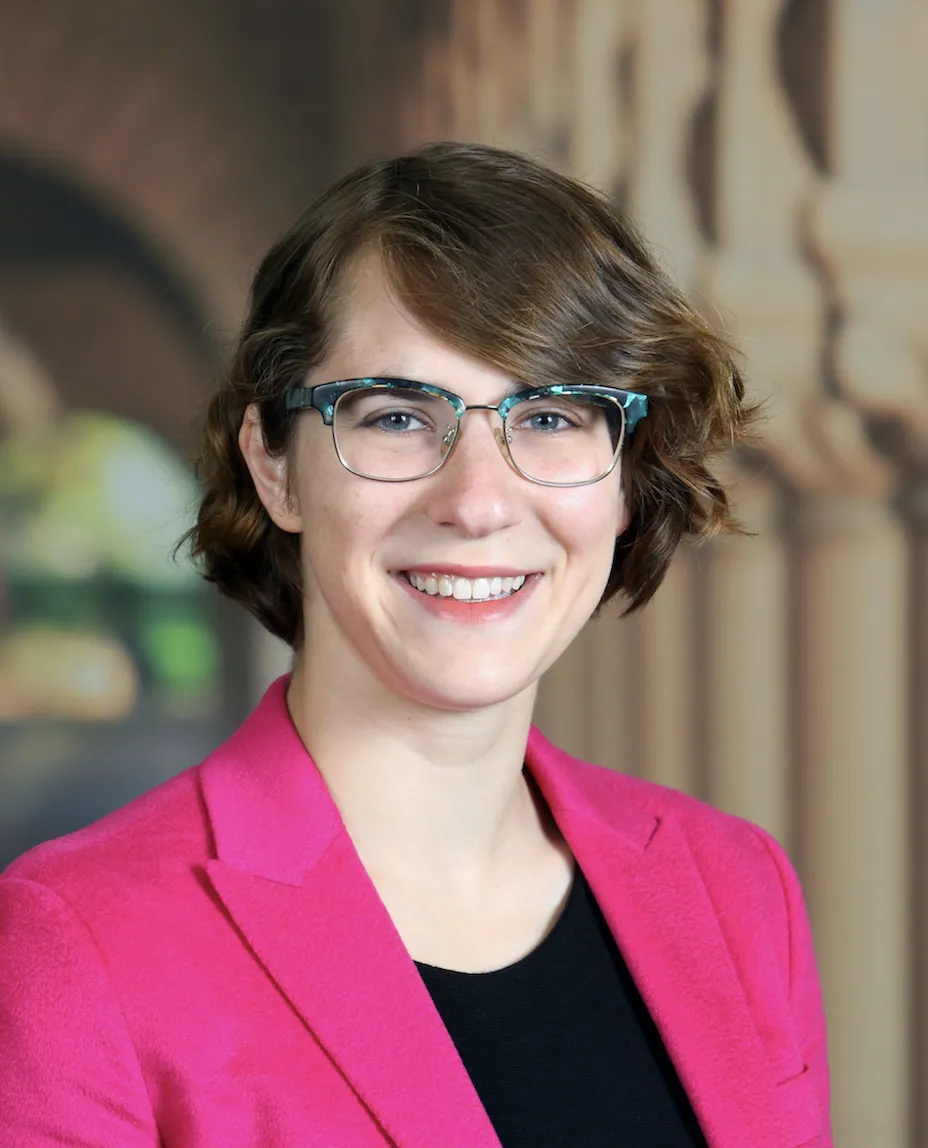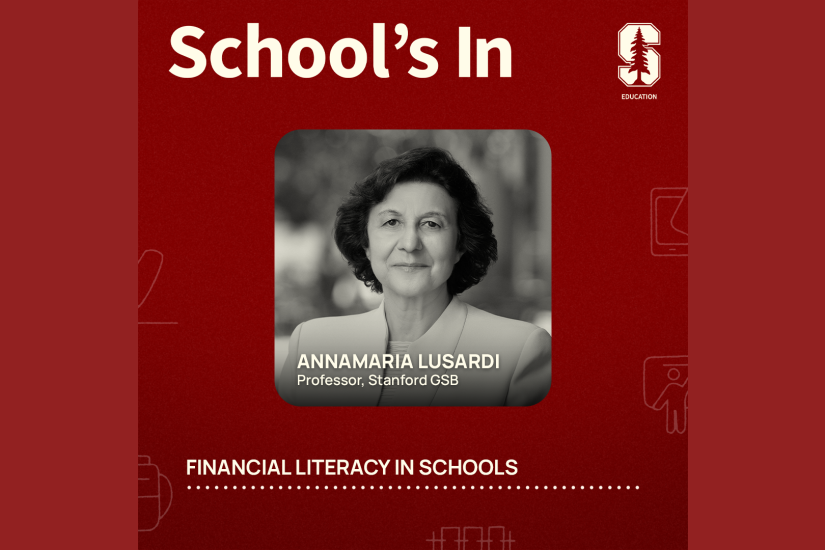
When cultural norms conflict in college advising
For many college students, academic advising is about more than navigating course requirements. It can be a critical connection to campus resources and help cultivate a sense of belonging, especially for international, immigrant, and first-generation students.
But institutional norms sometimes conflict with students’ expectations and ways of being — a “cultural mismatch” that can thwart the relationship between student and advisor, impeding students’ access to support and resources for academic success.
In a recent study, Emily Schell, a doctoral candidate at Stanford Graduate School of Education (GSE), investigated the role of culturally mismatched advising in higher education, identifying areas of possible conflict between institutional norms and students’ expectations. Through interviews with 41 Chinese American and Chinese international students and 33 of their academic advisors at four U.S. public and private universities, Schell found that cultural mismatches can occur on several fronts, such as the level of student voice and self-advocacy expected in advising, the value advisors and students placed on exploration, and the emphasis on “passion” to motivate academic decisions.
In a subsequent study, which Schell will present at the annual meeting of the American Educational Research Association on April 13, she analyzed student journals, interviews, and academic transcripts to explore the role of culturally responsive advising in 20 Chinese diaspora students’ first-year college experience.
From both studies, Schell identified advising behaviors that can create cultural mismatches for some students — as well as subtle tweaks that can better support a sense of belonging and well-being, especially for international and immigrant students, alleviating some of the need for institutions to develop separate programs to address these concerns.
“Cultural mismatches are often unintentional and hiding in plain sight, because European American norms are so deeply embedded in the structure and functioning of much of U.S. higher education,” she said. “By surfacing some of these mismatches and making some simple modifications, we can do more to support our students during their first-year transition and journeys through college.”

Emily Schell
Shifting assumptions
Schell, whose dissertation focuses on culturally responsive advising to support international and immigrant students, said her interest was ignited by her own background in East Asian studies and experience teaching elementary schoolers in China and Taiwan.
“I would ask my students what made them choose a particular extracurricular activity, and they would say, ‘My mom or dad wanted me to,’ or ‘My teacher recommended it,’ or ‘Because I’m good at it,’ ” said Schell. “I’d ask, ‘Do you like it?’ And they’d say, ‘That’s a weird question.’ ”
As a teacher, she realized she had to shift her assumptions about the role of enjoyment or passion in her students’ pursuits in order to affirm and support what actually motivated them. “I was able to be nimble enough to do that, but what about institutions?” she said. “I thought particularly about higher education and what would happen if some of my students went on to U.S. institutions.”
Students from China make up the largest proportion of international students at four-year colleges in the United States, according to the U.S. State Department, and the plurality of Asian American students are Chinese. Despite the “model minority” stereotype of Asian American students achieving high levels of academic success, Schell pointed to research indicating that Chinese diaspora students experience significant challenges navigating U.S. colleges, including xenophobia and linguistic barriers.
“Even if the students [in my research] are academically successful, many of them would say that they're not thriving yet,” she said. “They're struggling to build domestic friendships or they don't have an adult who’s in their corner, who sees and knows them. They might be moving through, getting great grades, but they're not really able to engage with the experience.”
What culturally mismatched advising looks like
Academic advisors are in a unique position to support students’ experiences, Schell said, but her research identified potential cultural mismatches on several fronts that could impact the advising relationship. For example, in addition to the role of “passion” in motivation, she found differences in the expectations of student voice: Advisors tended to expect students to lead advising conversations, which was daunting for some of the students Schell studied.
Another mismatch involved expectations of exploration, which Schell attributed partly to different cultural perceptions of students during this period of “emerging adulthood.” In a Chinese cultural context, 18- to 24-year-olds are often viewed (and see themselves) as adults whose undergraduate experience is predominantly intended for career preparation. But advisors, and U.S. higher education more broadly, tends to encourage students to use these years to explore a range of paths.
Schell also observed differences in the need for socioemotional support students sought from their advisors. For instance, in response to a question asking students to rank forms of support — including academic, career, social/cultural, and emotional — from most to least important, 73 percent of Chinese international students listed emotional or social/cultural support among their top two, compared with 53 percent of Chinese American and 36 percent of their European American peers.
Although advisors who shared a racial or ethnic background with students sometimes found it easier to connect to their Chinese diaspora students’ experiences, Schell found that some advisors across racial groups were able to successfully provide culturally responsive advising. In fact, some Chinese international interviewees expressed a preference for having an advisor from a different racial or ethnic background, as they came to study in the United States for exposure to different cultural perspectives.
Cultural mismatches in advising had consequences, Schell found. Some students reported disengaging from their advising relationships, turning instead to other sources such as professors or peers, who aren’t necessarily familiar with a wide range of campus resources — or, more concerningly, to no one at all. In interviews and journal entries, many indicated lower expectations of support from their advisors and lower satisfaction with their broader experience of support at their university.
Making knowledge gaps visible
Schell’s research surfaced advising behaviors that could address mismatched norms and expectations, meeting students where they are and taking it from there.
Advisors could take a few minutes to have an expectation-setting conversation at the beginning of the advising relationship, she said, to iron out questions that both sides have: Students might be unclear about an advisor’s role or the types of questions they can ask, or an advisor may not realize their student isn’t used to having a choice of courses and might not know how to navigate a course catalog.
“It’s all about that first conversation,” said Schell, “making potential knowledge gaps visible.”
One simple approach, she said, was for advisors to open with a menu of options for discussion, so that a student who isn’t clear about the type of questions the advisor can address can still shape the direction of the conversation. “It’s just a small tweak: Instead of ‘What do you want to talk about today,’ saying ‘Here are some of the things we could talk about.’ ”
Some students in Schell’s research who experienced culturally matched advising reported greater connections to campus resources and programs, such as one Chinese American student who credited his advisor with helping him access an opportunity to conduct medical research as a first-year undergrad. Recognizing that advisors might not be able to provide guidance on all of the extracurricular programs available at their institution, Schell said that communicating the boundaries of their advising role clearly and being prepared to refer students to people who can offer support in other areas was a more manageable way to ensure more holistic advising.
While her research focused on Chinese American and international students, these advising strategies apply broadly, Schell said.
“There’s a lot of conversation in higher ed, understandably, around issues with belonging for many different student groups, including international and first-generation students,” said Schell. “Institutions are investing a lot of money in new programs to address this, but here’s a powerful resource we already have that we can maximize to better support all of our students.”
Emily Schell’s research was supported by a research grant from NACADA: The Global Community for Academic Advising.



